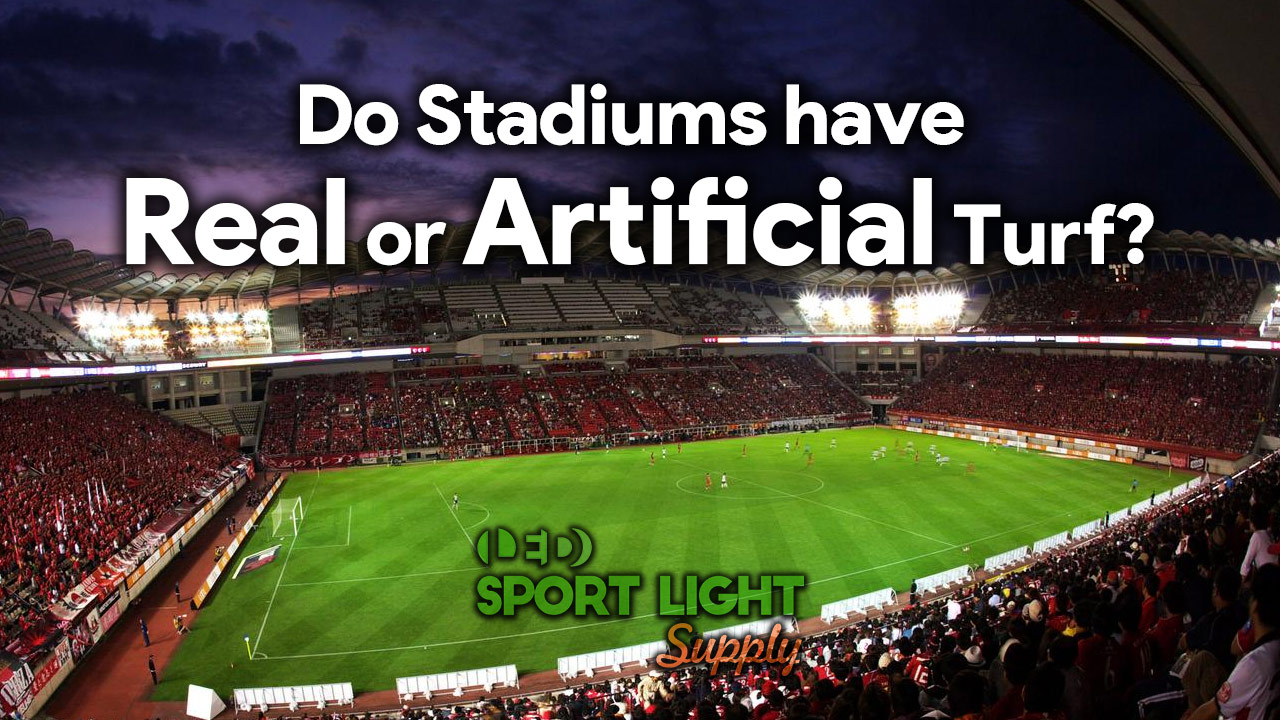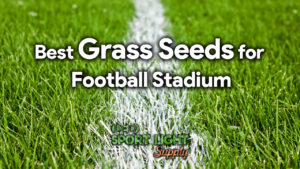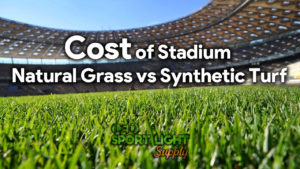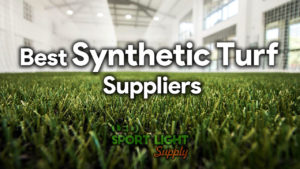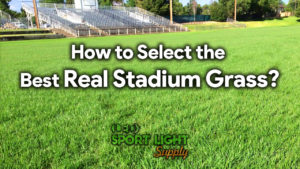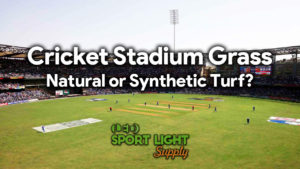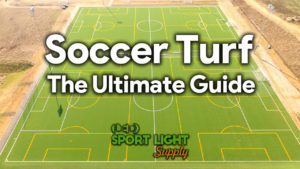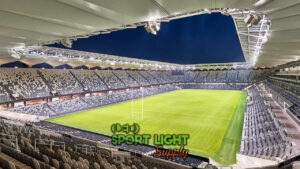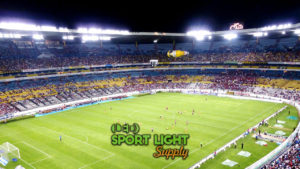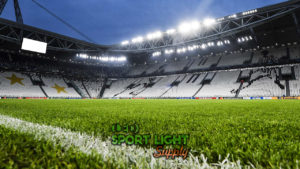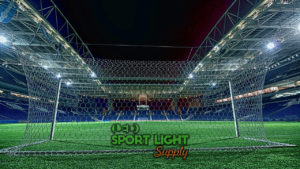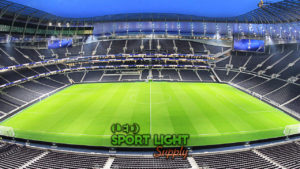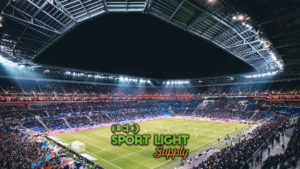In a stadium, the safety of the players trumps any other issue. So, the choice of using real grass or laying a synthetic lawn is no small thing. Most sports stadiums just follow the association rules. As in the case of astroturf and NFL football stadiums.
Sometimes, stadium owners prefer artificial turf for other reasons. For example, an authentic, natural turf needs periodic maintenance. Instead, fake grass has no weed problems. Yet, they are made of chemicals.
Whether a high school or a public park has natural or fake grass depends on many factors. On this page, you will read some of them. As well as the history of astroturf and why the NFL stopped using it.
In the end, the pros and cons of both natural and artificial turfs come down to personal preference, weather conditions, and traffic. You might want to use real grass. Yet, you may have to switch to synthetic alternatives for a year or two. After all, winter damage to the grass playing field can overstretch your budget.
What type of grass do football stadiums use?
The many sports associations suggest different seed species or blends. In football, the three most used grass seeds are:
- Bermuda Grass
- Kentucky Bluegrass
- Perennial Ryegrass
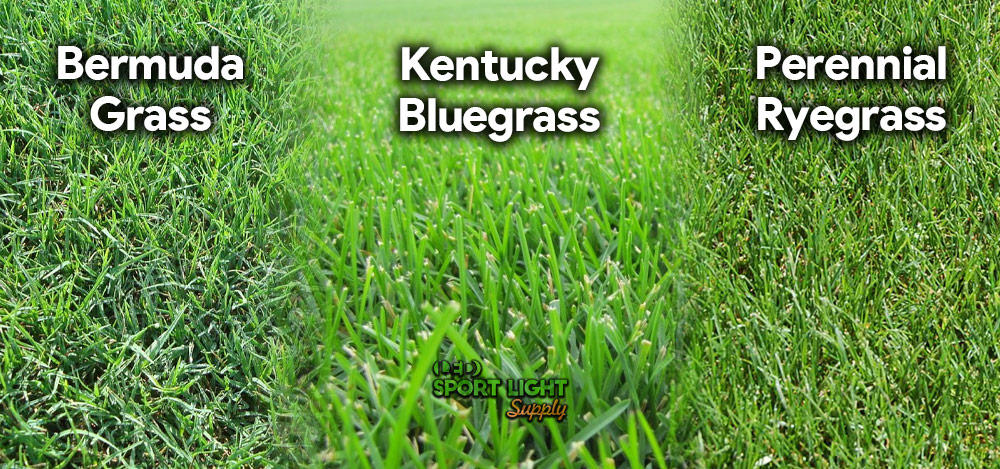
Usually, stadium owners buy SOD quality seeds. This means that the seeds they buy are free from weed seeds and contaminants.
The better the quality of the seed, the higher the quality of appearance and strength. Besides, better varieties mean low maintenance costs as well. Manufactures try to achieve more drought-tolerant grass. So, each seed comes with a different profile that makes it ideal for overseeding or regular seeding.
Of course, football stadiums are not the only ones that have natural grass. But some have troubles with the lawn and switch to artificial turf. That is how astroturf got popular in the first place.
When does a stadium use real grass?
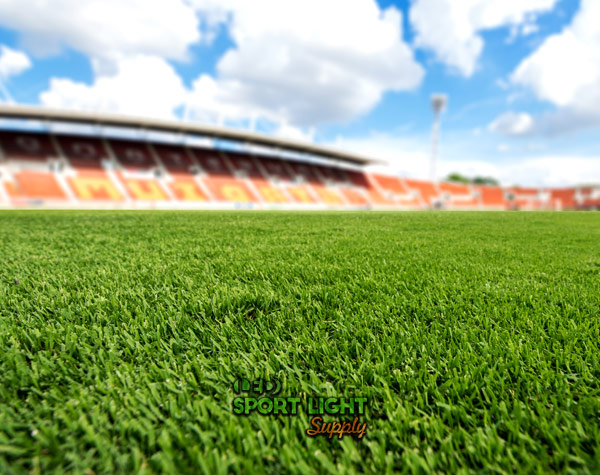 A stadium uses authentic grass whenever the owner can bear the cost of seeding, watering, and maintenance. Over the years, synthetic turfs only spread because they were a cheaper alternative.
A stadium uses authentic grass whenever the owner can bear the cost of seeding, watering, and maintenance. Over the years, synthetic turfs only spread because they were a cheaper alternative.
As a stadium owner, you need to hire people to care for the natural lawn. But you might prefer real grass because you love sports and care for your athletes as well.
Which sports stadiums implement authentic turf?
Most FIFA stadiums have natural grass playing fields. But many other sports associations prefer real turf to synthetic alternatives. Here is a list of several stadiums that use authentic grass:
- Allegiant Stadium (NFL stadium which uses Bermuda grass)
- Dick’s Sporting Goods Park (Major League Soccer stadium with Kentucky Bluegrass)
- Empower Field at Mile High (NFL stadium which uses Kentucky bluegrass)
- Heinz Field (NFL stadium which uses Kentucky bluegrass)
- Levi’s Stadium (NFL stadium which uses a Bermuda grass and perennial ryegrass mixture)
- Maracanã Stadium (FIFA stadium which uses Bermuda grass)
- Target Field (MLB stadium)
- Truist Park (MLB stadium)
- Wrigley Field (MLB stadium)
- Yankee Stadium (MLB stadium)
When does a stadium use artificial turf?
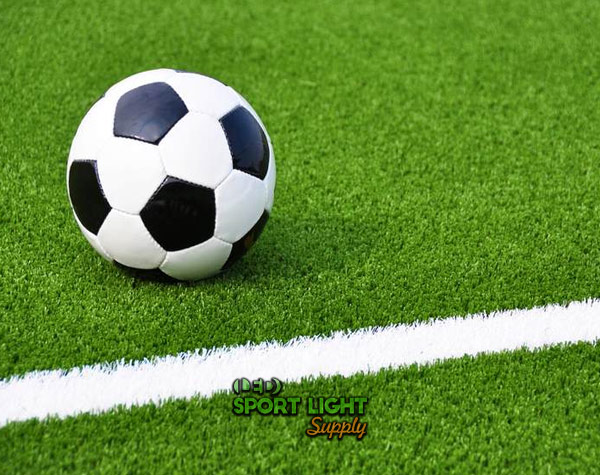 The main reason for installing a synthetic playing surface is the expenditure of real grass. Most likely, a stadium owner switches to artificial turf to save on budget. But sometimes, the weather conditions may affect the change or make it harder to choose natural grass.
The main reason for installing a synthetic playing surface is the expenditure of real grass. Most likely, a stadium owner switches to artificial turf to save on budget. But sometimes, the weather conditions may affect the change or make it harder to choose natural grass.
1. The primary benefit of artificial lawns: saving money
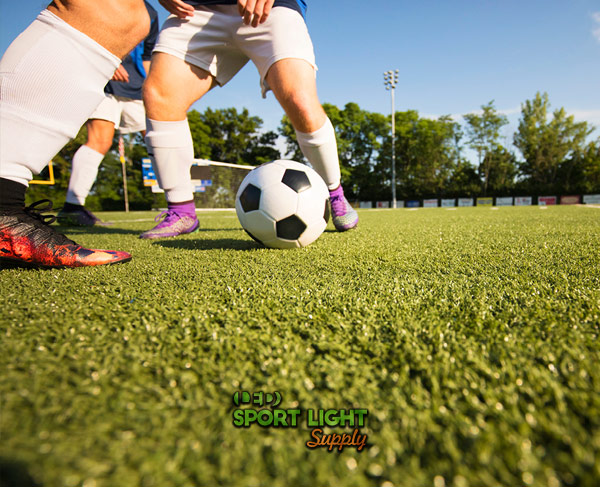 Fake grass does not grow, so your water savings make fake grass a more sustainable option than real plants. Of course, you also save time because you do not have to deal with any task related to managing an authentic lawn.
Fake grass does not grow, so your water savings make fake grass a more sustainable option than real plants. Of course, you also save time because you do not have to deal with any task related to managing an authentic lawn.
The better the installation, the lower the chances of turf issues. Plus, the players do not have to deal with mud sticking to their shoes. So, it provides many benefits while cutting down maintenance expenses.
For safety reasons, players should buy soccer boots (or specific footwear) for synthetic grass. If you choose a third-generation artificial playing surface, you get a more developed type of synthetic grass. Thus, you can use artificial turf at a professional level. Many products are FIFA- or NFL-approved, for example.
When the structure of fake grass changes from one product to the next, the installation system can replicate the effect of walking on natural grass. In the end, some stadium owners consider this factor to be decisive and agree to install an artificial field. After all, it looks like a better investment in the long run.
2. The materials
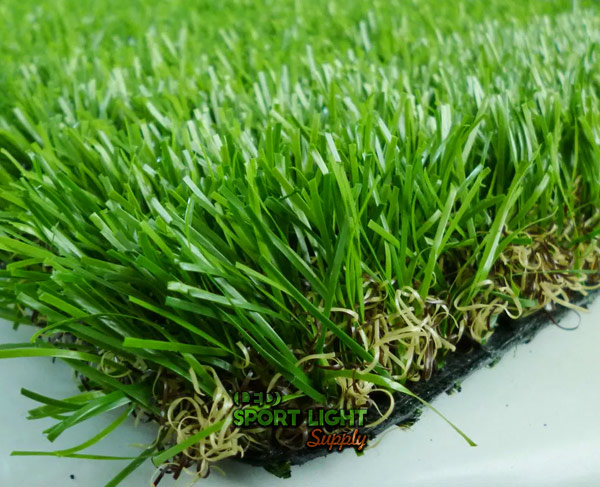 The synthetic grass filaments are made of textile fibers. Usually, a layer of dried latex compound covers both sides of each leaf blade. In this way, the turf adheres perfectly. On average, the materials of artificial turf include:
The synthetic grass filaments are made of textile fibers. Usually, a layer of dried latex compound covers both sides of each leaf blade. In this way, the turf adheres perfectly. On average, the materials of artificial turf include:
- Polypropylene has a low cost and allows to obtain a final result similar to fresh-cut grass. The aesthetic look is not perfect, but it has a good duration and UV protection.
- Polyethylene. It lasts longer and is of higher quality than the previous one. It allows you to recreate realistic softness and elasticity. The installation of this type of synthetic grass must be through root infill to allow the wires to remain straight even when subjected to continuous traffic.
- Polyamide or nylon. This is the most resistant of the three. But also the most expensive. Luckily, it is ideal for large spaces used intensively, such as sports fields.
3. Which sports stadiums implement artificial grass?
Synthetic turfs are a popular option for top-level venues. For example, you find fake grass in UEFA Champions League stadiums. Of course, some NFL stadiums have switched to synthetic products other than astroturf. Here is a list of stadiums that still use artificial turf:
- AT&T Stadium (NFL stadium)
- Bank of America Stadium (NFL stadium)
- Chase Field (Major League Baseball stadium)
- Ford Field (NFL stadium)
- Globe Life Field (Major League Baseball stadium)
- LoanDepot Park (Major League Baseball stadium)
- Parkside Sports Stadium (FIFA stadium)
- Rogers Centre (Major League Baseball stadium)
- Stade Marcel Picot (FIFA stadium)
- Stadio Dino Manuzzi (FIFA stadium)
- Tropicana Field (Major League Baseball stadium)
Real grass vs artificial grass in stadium
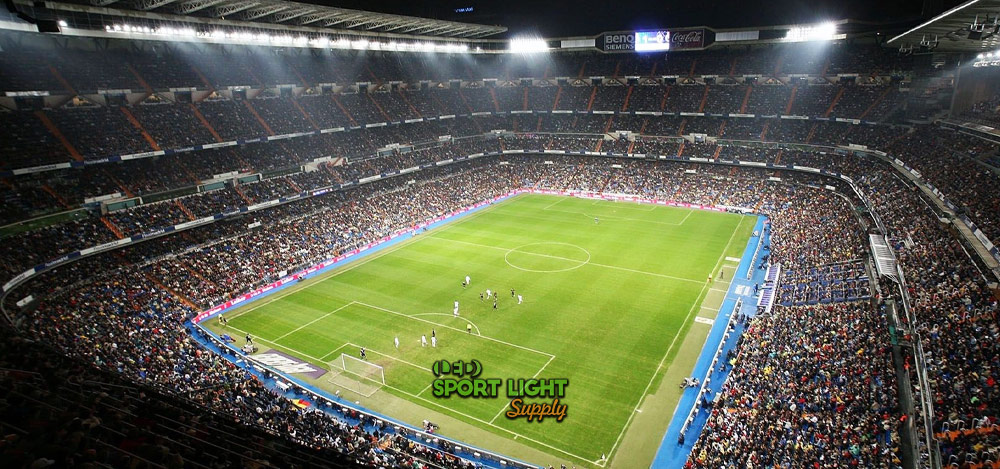
1. Natural grass
Organic grass has a life cycle. Usually, it stops growing in the fall. But of course, sports stadium owners want to keep the field green as long as possible. Even in a cold winter environment. But if you do not take care of the plants, the field will not stay green all the way through the winter.
Grass shuts down in the fall naturally for a few main reasons. Generally speaking, it stops growing because the day is shorter. When the sun gets low in the sky in the afternoon during the cold season, the leaf blades get less daylight.
Like any other plant, grass turns green because of chlorophyll. But besides sunlight, grass needs water and nutrients as well to thrive and survive. This means that a green lawn requires you to care for the grass and the soil conditions.
Soil temperature makes an enormous difference in the plant’s ability to absorb nutrients into the root system using the available water. Yet, the grass is not the same everywhere. Some species of plants live better in colder areas than others. In other words, this means that you need to select a grass seed for your lawn.
Cold season grasses will germinate with a soil temperature of 45°F. Unlike other grass seeds, the soil temperature is sometimes key to select a species or variety instead of another. If the soil temperature drops below the plant’s favorite temperature, the grass will start reserving its energy. Instead of pushing the nutrients in the roots up into the foliage, the plant would wait until the perceived winter is over. That is, when the desirable growing conditions come back.
2. Astroturf: the first artificial turf
Astroturf has evolved and changed over the course of 50 plus years. With every improvement, it looked more like real grass. When looking at two fields side-by-side, it was hard to tell which one has the astroturf and the natural grass.
Nonetheless, artificial and natural turfs are different. In fact, they are the complete opposite of each other. Chemstrand created astroturft back in 1962. Originally, its name was chemgrass. But it was later renamed astroturf.
The reason behind this invention was the grass being unplayable in bad weather like snow and rain. So, Chemstrand made a product that resembled grass but could withstand the weather and wear and tear. First, they sold it to a local school. But in the same year, they managed to sell it to professional sports stadiums.
Soon, astroturf was the first pick and implemented on a large scale. Until September 14th, 1968. That is when the first NFL game on astroturf took place. Since then, many NFL stadiums have kept installing this artificial turf. In 1974, even the Super Bowl had an astroturf playing area.
Throughout the following 20 years, astroturf became even more popular. But at the same time, it sparked more controversy than any other topic. Mainly because of its abrasive quality, which tended to cause more injuries. Plus, the original astroturf was stiff and almost as hard as concrete.
On the positive side, it allowed players to run faster. But as soon as the players played a game on regular grass turf, most teams would struggle noticeably.
What is better real stadium grass or artificial turf?
1. The pros of astroturf
The main benefit of artificial grass is minimum maintenance. Or lack of it. In fact, you do not need to cut the lawn because the blades do not grow. Once you make sure the stitch count is ok on most of the field, the maintenance routine is done. You do not have to worry about weeds and watering the grass.
As you do not need water and fertilizers, you save on your expenses. You do not even have to spend more money replacing it every year, unlike grass which dies. All throughout the year, you can enjoy the same consistency and thickness. Besides, the color does not change. So, you do not have to paint it again and again.
Overall, the price of astroturf is lower than regular grass in the long run. Instead, natural grass can include the risk of incurring extra costs for sudden incidents or changes in weather conditions.
2. The cons of artificial grass
The most common problems associated with synthetic turf are:
- dimensional instability
- high lead content
- over fibrillation
- poor tuft bind
- seam rupture
- UV breakdown
In just two and a half years, a low-quality artificial turf can break down. That is a sign of over fibrillation and poor tuft bind. Which only gets worse with exposure to sunlight over time.
Wear resistance can change from one product to the next. In general, a fake lawn may severely shed due to low-quality production. The quality of the yarn may impact deterioration. But in an attempt to further lower the cost, some manufacturers may prefer a cheap imitation that looks good but lasts less.
Testing and developing the highest quality synthetic turf takes time. Without it, the turf can display poor climatic dimensional stability. In short, the grass contracts and expands with temperature changes. Humidity can also cause seam ruptures and line dancing.
Of course, movement in the turf poses several safety hazards. As a result, you will have to pay for regular inspections of the turf installation. The goal of the evaluation is to reveal any evidence of such movement.
Seam rupture can equal the failure of the whole turf system. After all, poor seams, excessive play, and the natural characteristics of turf stretching cause seams to rupture prematurely. Then, you need to pay for repairs that can include sewing machines, hot melt glue, or just self-adhesive tape.
Lastly, unsafe levels of lead and other heavy metals can hide in synthetic turfs. This depends on the production process. You can reduce the risk of getting safe artificial turfs by choosing products made in the USA. But in the end, the producer liability does not replace any safety guarantee.
3. Why does natural grass matter in sports?
Every game in the FIFA World Cup history has been played on natural grass. At least until 2015, when the FIFA Women’s World Cup allowed playing on artificial grass.
When both FIFA and CSA refused to have the playing surface changed, the players filed a lawsuit against the two associations. Of course, this fact alone begs the question: why does natural grass matter so much?
In comparison with natural grass, artificial turf has a coefficient of restitution 30% higher. This means that the ball bounces a lot more than it would on an authentic field. Plus, the ball retains more of its speed off the bounce. So, it creates a faster game that can potentially affect timing.
If a strike from the 18-yard box is delayed by one-hundredth of a second, the attacker could miss the target. In a sense, the shot can fly off by more than 11 feet just because of this tiny fraction of time.
Real grass perspires, so heat is another key factor to consider. In detail, surface temperatures of artificial turf on sunny days generally exceed those of authentic grass. The difference can increase from 30 to 60 degrees Fahrenheit.
When the heat increases on the playing surface, the risk of dehydration also increases. Players can suffer from a reduction of reaction times by up to 33%. But nothing bothers players about artificial fields more than the risk of injuries.
Skin abrasions are more likely to occur on artificial turf because of the material being used. In fact, synthetic fibers increase friction. Plus, the turf can be so hard that it hurts the joints. Especially the anterior cruciate ligament.
With all this in mind, the turf also influences the way players attack and defend. For example, both football and soccer players tend to avoid defensive techniques like slide tackling.
Conclusion
You can find many stadiums with either natural or fake grass.
In a sense, authentic and synthetic grass are both valid options. Most stadium owners may be displeased with natural grass because they did not grow the right grass seed for their particular area. But they may want to cut down maintenance costs. So, fake grass becomes an appealing and sensible choice.
When thinking about what grass should be grown in a stadium, one should consider the whole country. Along with the top tier of the country are our Northern or cool-season areas. That is, from New England all the way out to Washington and Oregon. Down along the Southern part of the country, one should only grow heal-loving grasses. From Florida all the way to California, sports stadiums can still have natural grass even during the hot season.
In the so-called transition area (Maryland, southern Ohio, Missouri, and out to the west coast), one should grow both warm and cool-season types of grass.
The latest artificial turfs are better than astroturf and second-generation surfaces. But they still remain an alternative for anyone who wants to cut down costs. Because given a choice, players still enjoy real grass better than any artificial lawn.

